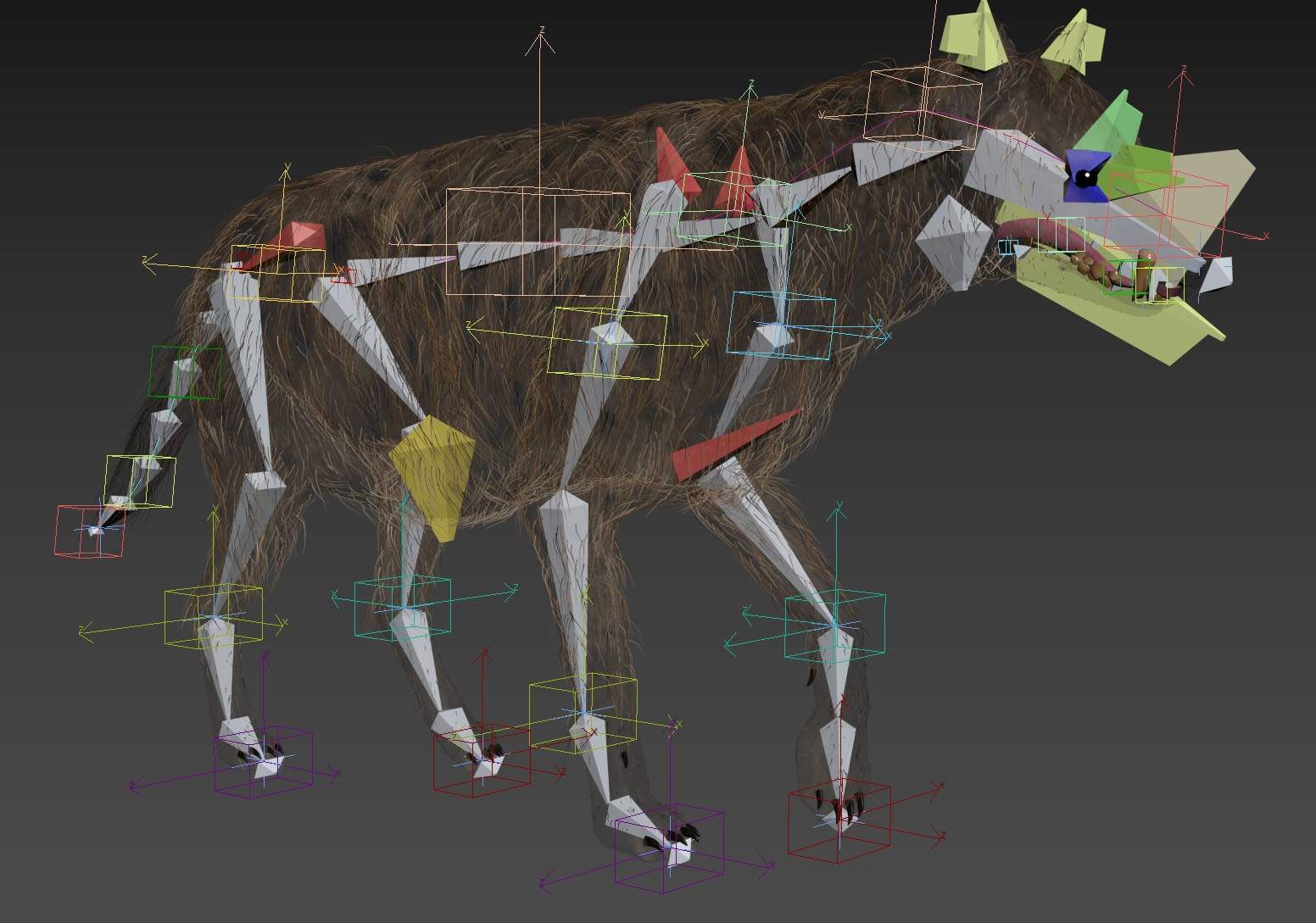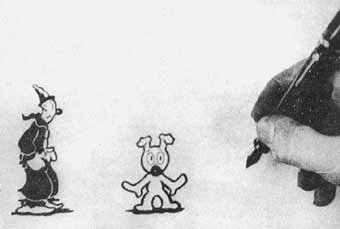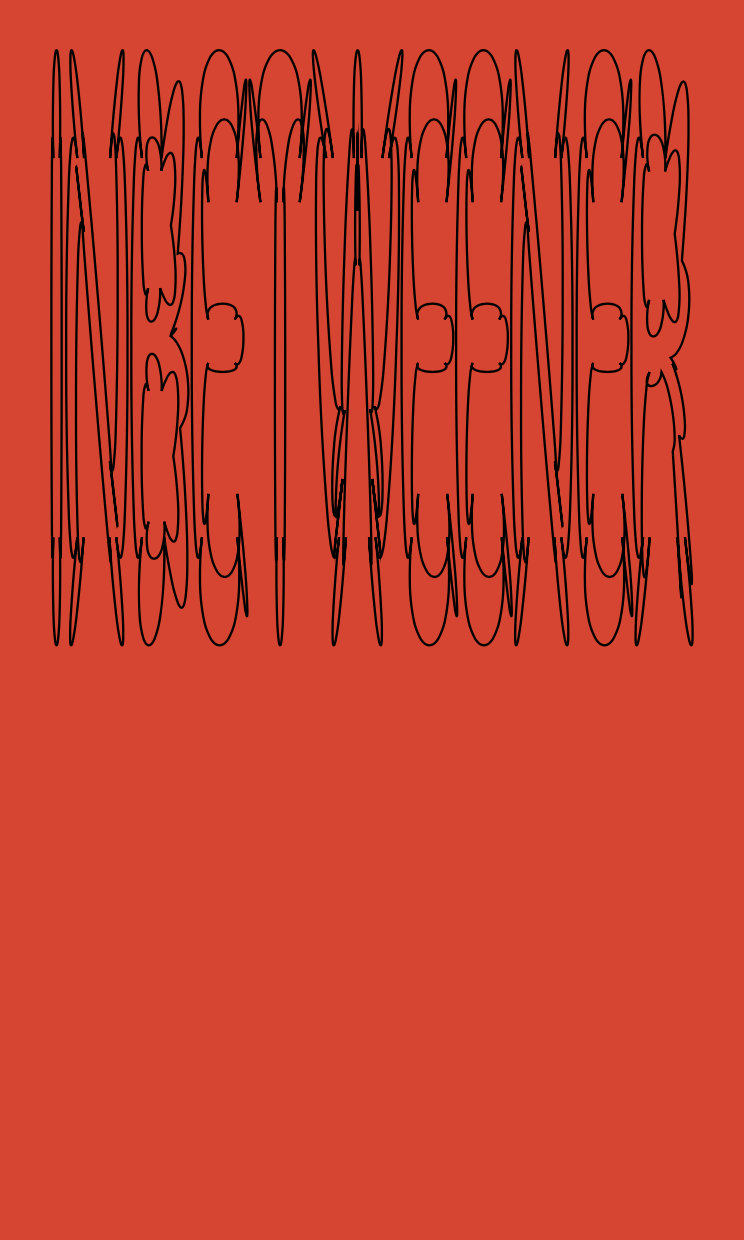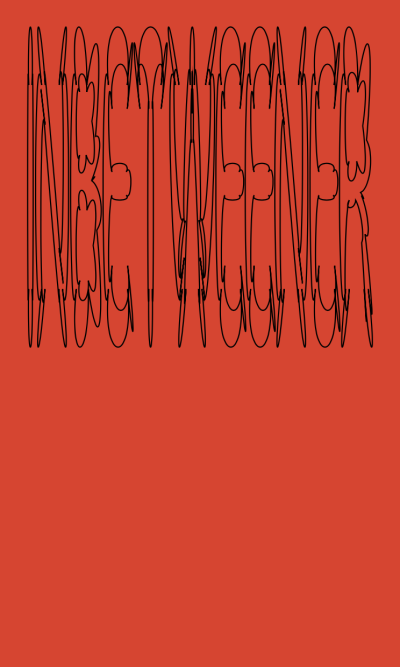Perhaps cartoon physics speaks to a utopian condition of bodily invulnerability then, and all the coyotes, cats, and ducks represent more of an attempt to hold on to (for kids) or return to (for adults) the body that could take a lickin’ and keep on tickin’.
—Scott Bukatman[1]
Before a character model can be posed and animated, it must be bound to a system of interconnected joints and bones. Otherwise, a model is a static mesh—an unwavering digital asset, not unlike a still image. A character animator folds an invisible skeleton into a 3D mesh, specifying joints and defining their overall motion. The animator must go as far as to specify the weight of each bone, in a process called “weight painting,” as well as to define the joint hierarchy that follows. This last step works by establishing a choreography for the bones: the farther the vertices get from the root bone, the less they are affected. For example, in the sequence “root → spine → shoulder → elbow,” the elbow moves less in relation to the root bone than the spine does. An animator must demarcate the degree of freedom of this digital skeleton/this 3D mesh—known as the “rig”—as realistic human motion is typically constrained to one axis. The elements of a rig are modular; they are assembled into larger-scale objects but can also maintain their separate identities. After all the joints and bones have been indicated, a model is considered fully rigged, and an animator can bend the model into the desired poses.

These days, in order to crawl closer to realism, animation software must account for as many contingencies as possible. It must contain not only the correct formulas for realistic motion but also their reverse: a complex set of parameters that define an armature of constraint, and that prevent the model from crossing into the realm of unrealistic animation.
The increasing parameterization of software, which affects rigging in the process, has forced animators to contend with questions that were previously irrelevant. Questions such as: How much does Sonic the Hedgehog weigh? How thick is his skin? Such considerations did not matter in an era that lacked the technical sophistication to apply anything like bone density to the model. In short, software in its earlier iterations did not computationally support the notion and virtual production of a quantified body the way it does now.
This encroachment of real-world physics and parameterized design into a space once ruled by the fatalistic and surreal movements of cartoon protoplasms has had a profound effect on the imaging of bodies. Computer-animated imagery has a long precedent of modeling scenes too difficult to photograph or too risky to replicate by bodies. As a result, much of what gets prioritized in modeling software are simpler solutions for the depiction of realistic bodies, encounters, and catastrophes.
The realistic rendering of cloth, fog, and fire requires massive budgets and serious technical expertise—typically achievable only by the most successful production studios.
Thus, the leaders in developing these glossy imaging strategies are those companies that can afford to add further spit-shine and richer transparencies to their models. Today’s viewers are experiencing bodies that, first and foremost, showcase the costs of their production. This new visual paradigm has the consequence of obfuscating the constructed nature of these images in its quest to present them as “real.”
New questions in turn result from this state of affairs. With verisimilitude being the new modus operandi of animation, how has the depiction of bodies systematically changed along with the new manipulability that has been baked into software? And how does the alternative—taking the edge off surficial representation by concerning viewers with the mechanics behind what gets depicted—get implemented? What is the nature of this kind of modeling as a thing witnessed in the world?
Evident in these techniques—and across contemporary visual cultures that use technology to extend or enliven characters—is the correspondence between our subjective bodily imagination and our objective body image, and the irreducibility of the one to the other. Modeling is a small sample of a larger cross section of what it means to “embody” virtual volumes—that is, to infuse life into a set of data that then becomes manipulable. This act moves us beyond preconceived notions of passive, second-order viewer experience and into an operational, psychoanalytic, and corporeal exchange with aesthetic consequences.
It comes as no surprise that, with their history of plasmatic, free-form, and potent movement, early cartoons gave rise to some of the tropes of animation we continue to see to this day. Exaggerated proportions and oil-paint smears squashed and stretched their subjects, pushing the limits of animators’ new tools in the 1910s. Thanks to these new tools facilitating the transition into topsy-turvydom, viewers came to understand the cartoon world order to be profoundly exaggerated and unachievable. Cartoon physics superseded the normal laws of nature, as fear negated gravity (think of Wile E. Coyote running off a cliff and hovering in the air) and flattened bodies snapped back into normality. The impossible plasticity and accompanying defamation of gravity revealed a sanitized and tragicomic performance of brokenness. Cartoon figures get defeated but do not die—they must keep expressing themselves. Stuck in a tragic loop of resequenced death, cartoons introduced a new level of abstraction wherein the major referent is no longer the material world but rather the technical culture behind the curtain.[2]
Frequently ignoring the fourth wall, the first cartoons reference their own making: a collective labor process that condensed days and nights, cityscapes, and animators’ familial dynamics into images that move of their own accord. An early rotoscope cartoon, Cartoon Factory (1927), illustrates this history of cartoons as being concerned with the nature of animation itself. Cartoon Factory begins with a photographic image of the animator’s hand drawing its subject, a pernicious jokester named Koko the Clown. The cartoon cycles through the processes of its own making. We see an animator sketching the clown, who, throughout the short, continually reflects on his relationship to his maker. Viewers even get glimpses of the animation studio and the structural hierarchy that comes with it, a blip that showcases the uncredited labor performed there, the tedium, and the classed, gendered, and racialized bodies doing the animating.

The short animation gestures toward the disjunction between available tools and the exaggerated movements birthed from them. Animation, with its continual reactivation of past activity, highlights the fundamental gap between the work that goes into making it and what is made. Few other practices of visual culture acknowledge this stark break between the final product and the time spent making it.
Yet another cartoon short, Wile E. Coyote and Roadrunner (1949), narrativizes the self-reflexive quality of animation. Chuck Jones, the creator of the Looney Tunes franchise from which these cartoons emerged, implemented a strict set of rules to govern the animated space of his universe. Much of the success of these cartoons was based on the capacity to make the cartoon characters feel free-wheeling and sovereign in spite of the cartoon physics and the carefully constructed universe they were subject to. When Wile E. Coyote launches off a cliff as a result of the conniving designs of his nemesis, his body melts into a gestural stroke before snapping back into place. The Roadrunner disappears into a trompe l’oeil image of a tunnel, which the viewer comes to realize is two-dimensional through Wile E.’s subsequent encounter with it. Thus, the central gag for the Roadrunner cartoons is precisely this instability of the rules that govern the characters’ animated space. Storytelling has long been a push and pull between fact and fiction, but, as these early cartoons demonstrate, realism was historically seen as either too costly to model—or no fun.
The origins of animation are thus rooted in illustrations of profoundly unachievable relations to the world. To be destroyed and remain intact is the fundamental credo of the phantasmatic cartoon universe. The assumptions of an eminently rational mind—that Wile E. Coyote will enter the trompe l’oeil tunnel, that the anvil won’t bounce back after being thrown off a cliff—begin with trust in the natural laws governing our world. But the cartoon is neither wholly artificial nor entirely accurate: it’s both. From these beginnings, generations of viewers ingested cartoons as a vector for the idea that no wound is mortal—and so began a culture-wide reimagining of the body and its relation to the world.
At stake here is a fundamental belief in the tactile, haptic effects of images and their psychic transfer. The bodies in cartoons demonstrate a plasticity, persistence of character, ability to proliferate, and capacity to self-determine that all run counter to how the act of animation itself is conceived as a slowly unfolding process. Furthermore, the limitless potential of the undying body that cartoons depict—and their nonorganicness—make apparent the strange contradiction between cartoons’ ability to change forms and a viewer’s own incapacity to experience this infinite pliability. One wonders if the increasing frequency of plastic, aesthetic strategies in movies has stretched the seemingly immutable laws of dominant cultural modes, such as live-action cinema, toward the impossible—fueled by a desire to see a version of an ageless space. Are we tantalized by what cartoon bodies undergo, knowing full well that ours could never? Does the infinitude of Wile E. Coyote’s body come as a relief? By cartoon logic, what doesn’t die is, after all, forced to keep expressing itself.
[1] Scott Bukatman, “Some Observations Pertaining to Cartoon Physics; or, The Cartoon Cat in the Machine,” Animating Film Theory (Durham, NC: Duke University Press, 2014), 309.
[2] This plasticity manifests on an intellectual-property basis, too. Seeing the same, familiar face of Goofy means reentering that intimacy and all the archetypes that come with it.

